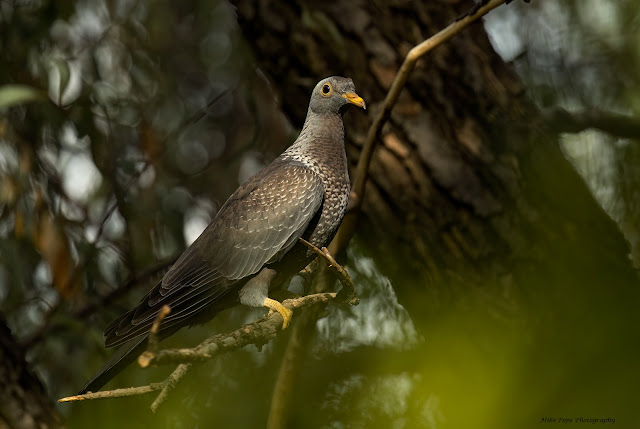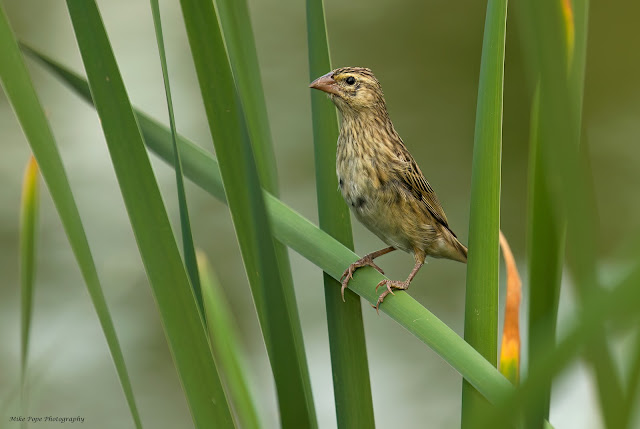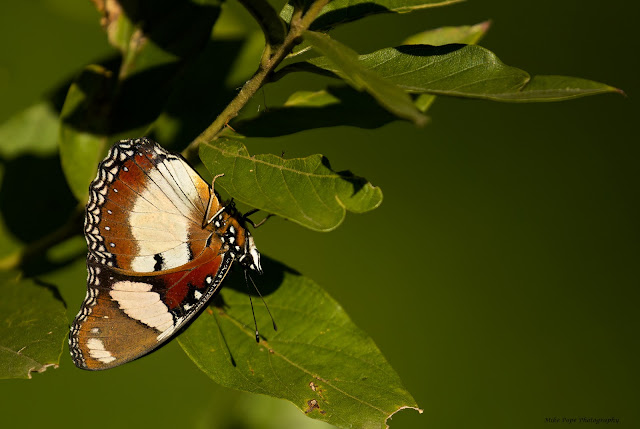31 March 2024 - Kyalami Estates
March was quieter than last year as I recorded only 46 species which is 10 down on the previous year - but still a few good species recorded, including some migrants.
Not much from the garden other than an Amethyst Sunbird that posed for a few images after enjoying the flowering Wild Dagga
 |
| Amethyst Sunbird (Chalcomitra amethystina) |
And the ever present Dark-capped Bulbul's
 |
| Dark-capped Bulbul (Pycnonotus tricolor) |
Along with the odd Southern Grey-headed Sparrow
 |
| Southern Grey-headed Sparrow (Passer diffusus) |
I thought this abstract of a Grey Go-away-bird was quite funky
 |
| Grey Go-away-bird (Crinifer concolor) |
In the main park, an African Harrier-Hawk that always sends other species scattering for cover
 |
| African Harrier-Hawk (Polyboroides typus) |
African Olive Pigeons still abound
 |
| African Olive Pigeon (Columba arquatrix) |
And the Bronze Mannikin's are still enjoying feeding on the seeds on the grasses along the stream
 |
| Bronze Mannikin (Spermestes cucullata) |
 |
| Juvenile Bronze Mannikin (Spermestes cucullata) |
A single Woodland Kingfisher was a real bonus and delight to see in our Estate
 |
| Woodland Kingfisher (Halcyon senegalensis) |
The resident Greater-striped Swallow's
 |
| Greater-striped Swallow (Cecropis cucullata) |
Were joined briefly by a pair of Lesser-striped Swallow's which was a first for me in the Estate
 |
| Lesser-striped Swallow (Cecropis abyssinica) |
Down at St Ledger Dam, Reed Cormorants seem to be present on most visits
 |
| Reed Cormorant (Microcarbo africanus) |
The Southern Red Bishops are still feeding some late fledglings, whilst the males are losing their breeding plumage and are looking a little tatty
 |
| Southern Red Bishop (Euplectes orix) |
Green Wood-hoopoe's were exploring a Palm Tree and other crevices
 |
| Green Wood-hoopoe (Phoeniculus purpureus) |
Whilst I managed to also find what I assume is perhaps a 2nd Woodland Kingfisher in the woodland adjacent to the dam
 |
| Woodland Kingfisher (Halcyon senegalensis) |
Willow Warbler's were vocal and with patience, I managed a few images when they paused briefly in an open space where they were actively foraging and fattening up before their journey north
 |
| Willow Warbler (Phylloscopus trochilus) |
In the garden, I had this Lizard/Skink species
 |
| Skink sp. |
There was a lot of invertebrate activity this month which was really encouraging. Asian Grass Blues are probably the most abundant butterfly
 |
| African Grass Blue (Zizeeria k. knysna) |
Whilst African Plain Tiger were also seen
 |
| African Plain Tiger (Danaus c. orientis) |
Common Leopard numbers seem to have increased
 |
| Common Leopard (Phalanta phalantha) |
and a new addition to the butterfly list was this striking Common Diadem. The iridescent blue around the white spots can only be seen at certain angles
 |
| Common Diadem (Hypolimnas misippus) |
Quite a few green Grasshoppers in the reeds at the dam
 |
| Grasshopper sp. |
A new addition to the dragonfly list for the Estate was this Banded Groundling - both male and female
 |
| Female Banded Groundling (Brachythermis leucosticta) |
 |
| Male Banded Groundling (Brachythermis leucosticta) |
In addition to the stunning Red-veined Dropwing
 |
| Red-veined Dropwing (Trithemis arteriosa) |
and this still to be identified species
 |
| Dragonfly sp. |
Along with this one
 |
| Dragonfly sp. |
There were also very many Damselflies which I still struggle to ID, although the Swamp Bluet is pretty distinctive
 |
| Swamp Bluet (Africallagma glaucum) |
Here are a selection of the others that I recorded and photographed, still to be ID'd
 |
| Damselfly sp. |
So, overall March was a pretty good month from a diversity perspective





























No comments:
Post a Comment